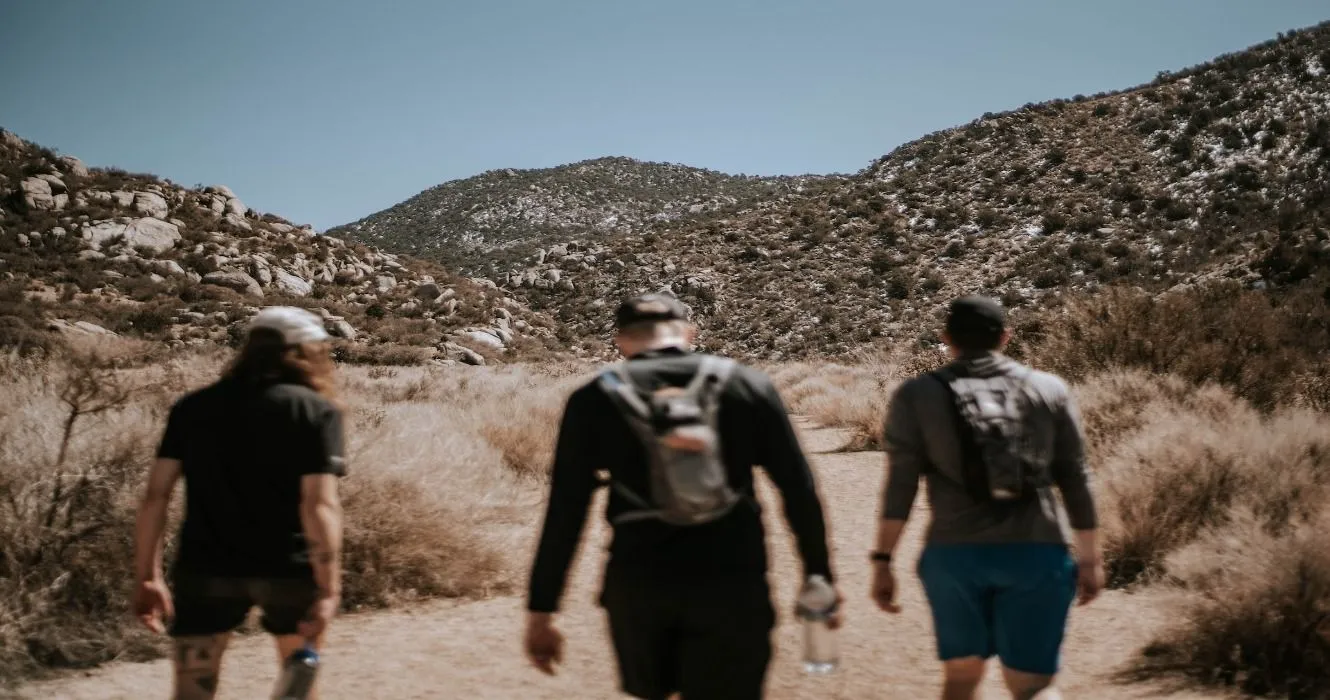🚨 Call for Help
When facing an emergency on the trail, the most important first step is to call for help. If you have cell service, dial emergency services immediately and provide your GPS coordinates or a detailed description of your last known location. Do not waste time trying to find a signal by moving randomly; even one bar might be enough for a call or text. Using your phone's emergency SOS feature can also transmit your location to authorities without a full signal.
Knowing what to do if lost hiking begins with staying calm and making logical decisions. Call friends or family only after you've contacted emergency services. Always pack a fully charged phone and consider carrying a portable charger. In remote areas, a satellite communicator or personal locator beacon (PLB) becomes a lifeline. These devices are essential tools in any hiker's emergency preparedness kit.
>> Read More: How To Start Hiking: A Detailed Guide for Beginners
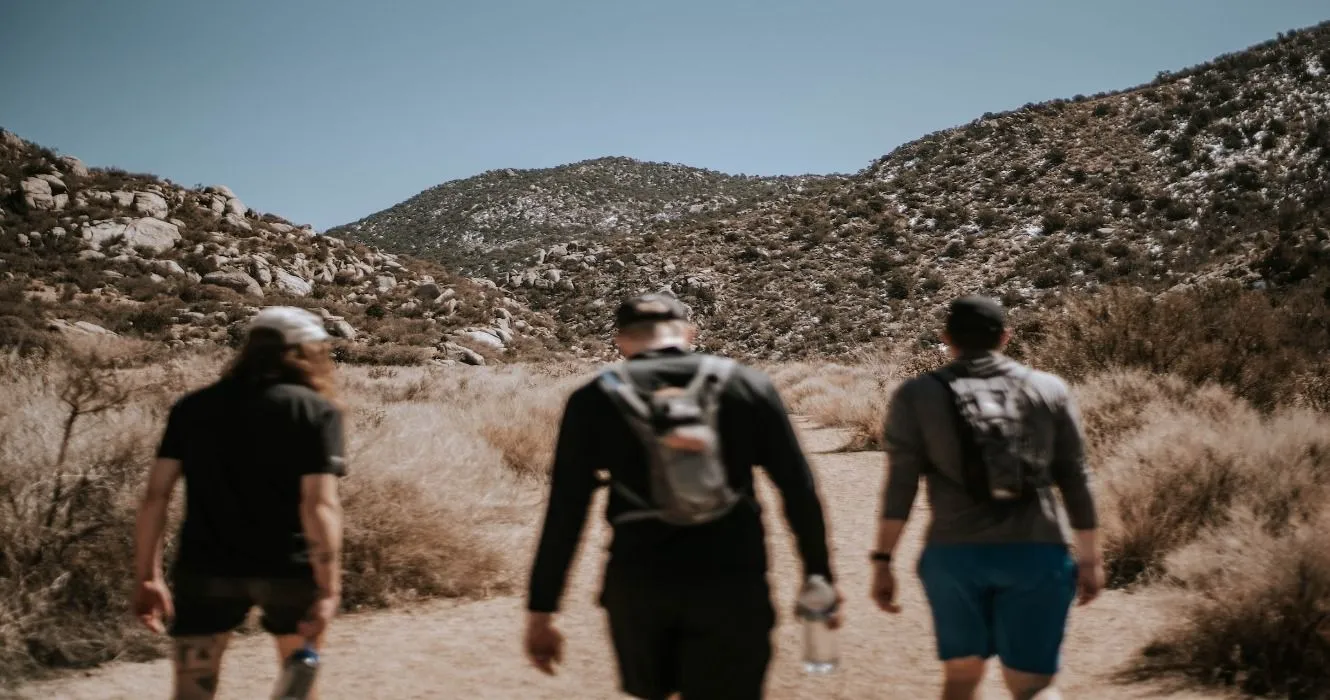
📍 Wait Near an Easily Recognizable Place
One of the key principles of what to do if lost hiking is to stop moving and stay near a landmark that can be spotted from the air or recognized by searchers. Large clearings, trail junctions, or large rocks make excellent waiting spots. Movement often complicates search efforts by scattering your scent and trail.
Staying in one location improves your chances of being found quickly. If you're in a densely wooded area, find a space with a clear overhead view in case aerial searchers are deployed. Avoid hiding under thick tree cover or moving into difficult terrain. Make your area more noticeable with bright clothing, gear, or signal markers. Settle in and conserve energy while staying visible and audible.
>> Read More: How To Read Hiking Trail Signs: Symbol Meanings
🔊 Use Your Whistle
Every hiker should carry a whistle, it's a critical tool in the strategy of what to do if lost hiking. The sound of a whistle carries farther and more consistently than the human voice, especially in thick woods or valleys. The international distress signal is three short blasts in a row, repeated at regular intervals.
Whistling uses less energy than shouting and can be done over longer periods. Alternate whistle blasts with listening intervals so you can hear search teams approaching. Attach your whistle to your backpack or wear it around your neck to keep it accessible. Never rely solely on shouting; a whistle can be heard up to a mile away in ideal conditions. Always test your whistle before hiking and teach kids how to use it properly.
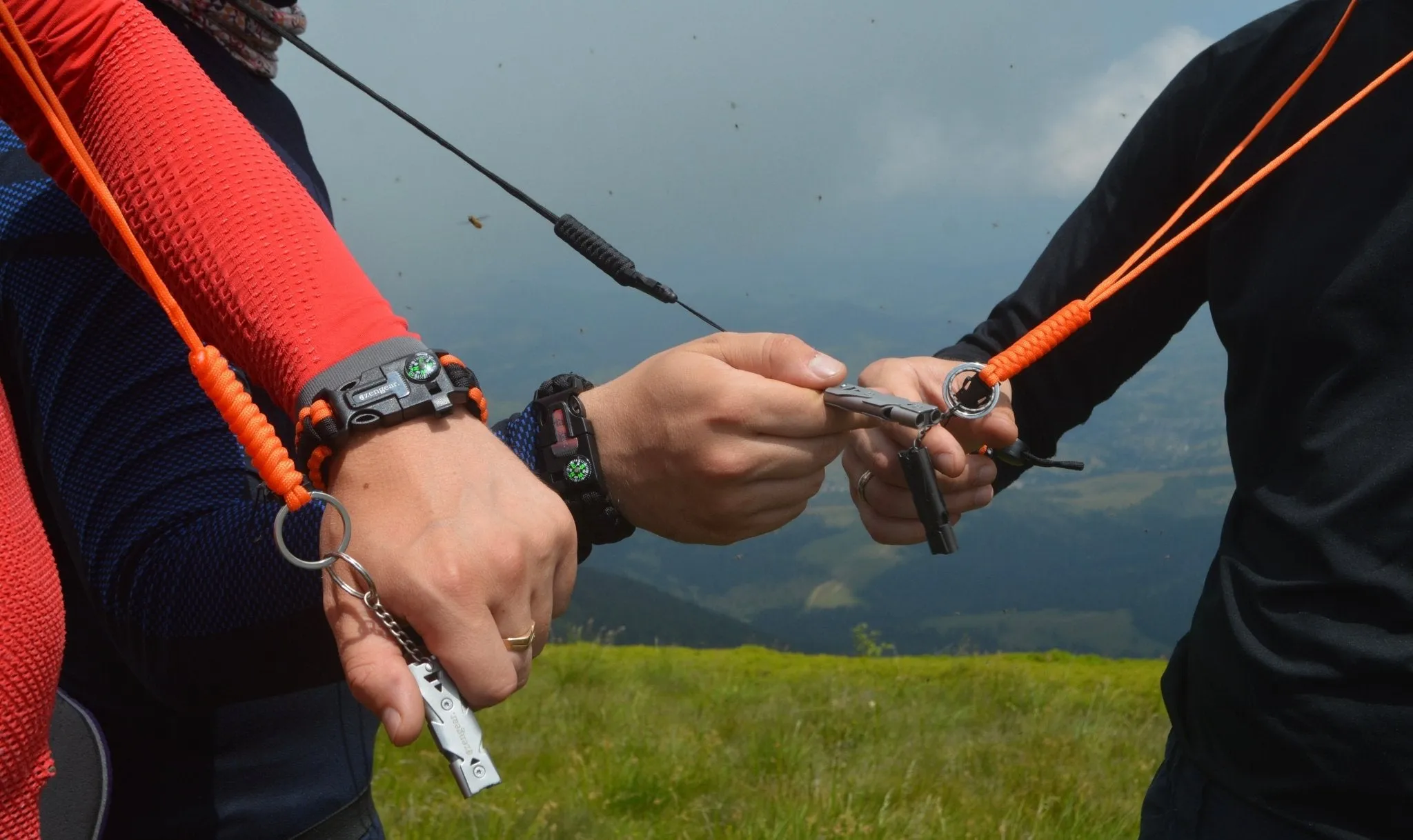
👀 Get Noticed
Making yourself noticeable is a crucial tactic in understanding what to do if lost hiking. Use bright or reflective items like emergency blankets, colorful clothing, or headlamps to catch the attention of searchers. Create symbols like large X's, arrows, or SOS signs with rocks, sticks, or scraped earth to communicate distress.
Movement, light, and color are key. Waving brightly colored gear or using a mirror to reflect sunlight can attract rescuers' eyes. At night, blinking a flashlight or headlamp in intervals signals life. Try not to obstruct these signals by remaining under dense canopy. The goal is to maximize visibility while staying safe and in one place unless moving becomes necessary.
👣 Try to Retrace Your Steps
If you feel confident and the environment is safe, carefully attempt to retrace your steps. This step in what to do if lost hiking must be taken with extreme caution. Only do this if you are certain of the direction and if there is ample daylight remaining. Mark your path using sticks, stones, or ribbons so you don't become more disoriented.
Many hikers make the mistake of blindly wandering, which reduces the likelihood of being found. If you reach a familiar spot or trail, stay there and wait for help. Returning to a known path increases your chances of encountering other hikers or rescuers. Do not take unnecessary risks with cliffs, rivers, or unfamiliar terrain just to move forward.
🗺️ Consult Your Map
A physical map is one of the best tools you can have when figuring out what to do if lost hiking. If you've been marking your route, backtrack using nearby landmarks and trail contours. Understanding topography and elevation changes helps determine your location relative to known points on the map.
Do not rely solely on digital maps or apps without backup. GPS devices can fail or run out of battery. Familiarity with reading topographic maps and using a compass is essential before any hike. Even a general idea of where you are can help you navigate back to a trailhead or known feature. Always store your map in a waterproof case to ensure usability in any condition.
>> Read More: GPS vs. Map Navigation: Advantages and Disadvantages
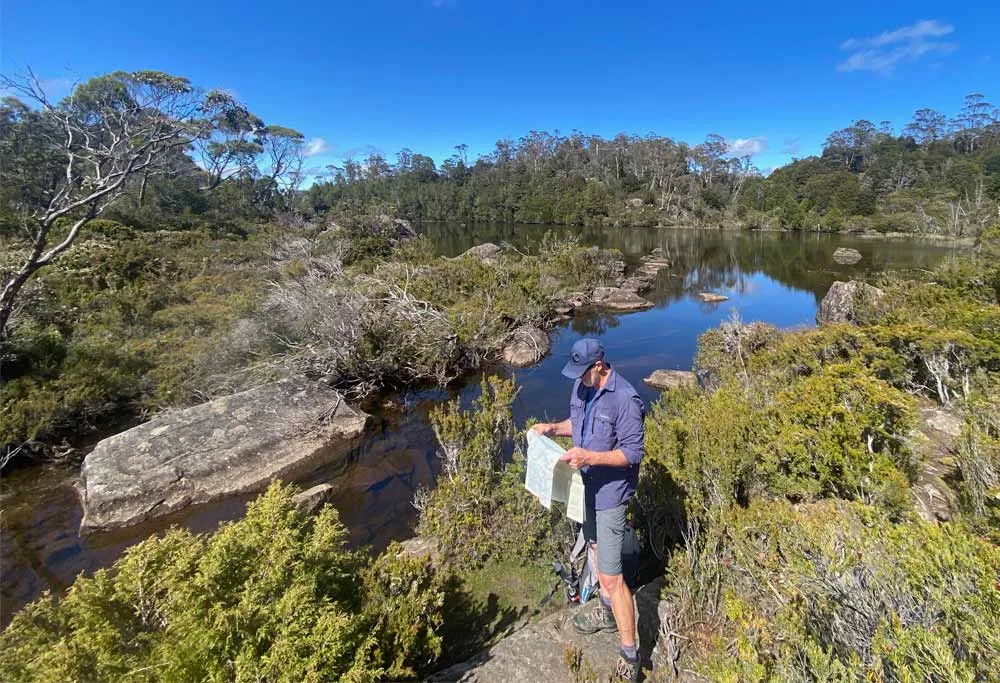
🧭 Use Your Compass
A compass becomes a valuable tool when paired with a map to figure out what to do if lost hiking. Determine your general direction of travel and try to reorient yourself using natural features. North-facing slopes often have denser vegetation and less sun, while moss commonly grows on the north side of trees.
Use the compass to maintain a straight path if you decide to walk to a known point. Avoid walking in circles, a common mistake among lost hikers. Always calibrate and test your compass before heading out. Even without a map, a compass can help you maintain direction and prevent disorientation. Knowing how to use this simple tool could mean the difference between rescue and prolonged danger.
📱 Use Your GPS
Modern GPS devices or smartphones with offline maps are incredibly helpful in understanding what to do if lost hiking. Before your hike, download maps that can be accessed without service. Many apps also allow you to mark your starting point and record your route for easier backtracking.
A GPS can pinpoint your location, show nearby trails, and even estimate distance to safety. However, always carry spare batteries or a power bank. Keep your device protected from water and impacts with proper casing. Don't rely on just one device, use your GPS in combination with your map and compass. Layered navigation strategies dramatically increase your chances of finding your way back.
>> Read More: How To Read a Hiking Trail Map Quickly and Easily
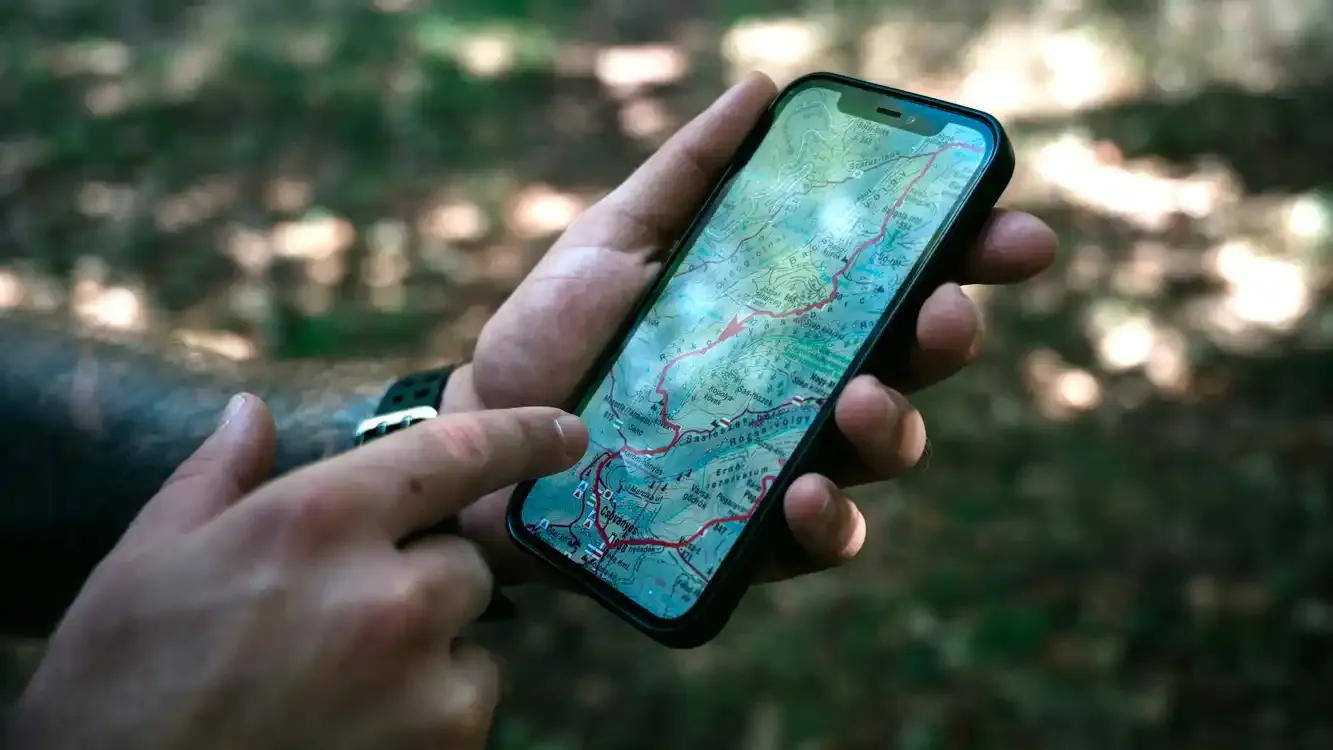
💧 Follow Water
If you're completely disoriented and must move, one rule of thumb in what to do if lost hiking is to follow a water source. Streams and rivers often lead to lower elevations, where roads, camps, or settlements may exist. Flowing water can also help guide rescuers toward your location.
Always move downstream, not uphill. Avoid traveling at night near water to reduce the risk of injury. Filter or boil water to stay hydrated and avoid illness. Use caution in steep or slippery terrain. Water is both a navigational aid and a survival resource, treat it with respect and awareness. Being near water can also boost morale and help you think more clearly.
>> Read More: Best Water Filters, Best Water Purification Tablets
🌙 What to Do If You Have to Stay the Night?
Knowing what to do if lost hiking includes preparing mentally and physically for the chance that you might have to spend the night outdoors. The key is to remain calm and take clear, purposeful action to protect yourself from the elements and stay safe.
Here's how to approach an unexpected overnight situation:
- Find or create shelter: Use a natural structure or build a basic shelter using branches, leaves, or your emergency blanket to shield yourself from wind, rain, and cold.
- Stay dry and warm: Wet clothing increases the risk of hypothermia. Use a poncho or tarp to keep dry, and insulate yourself from the ground with your backpack, extra clothes, or gathered leaves.
- Conserve energy: Panic wastes energy and accelerates dehydration. Stay mentally calm, breathe slowly, and avoid unnecessary movement.
- Keep signaling tools nearby: Have your flashlight, whistle, or mirror ready in case you hear rescuers nearby, especially during the night.
- Ration supplies: Eat small portions of food and sip water sparingly. Make your provisions last until help arrives.
A night outdoors can be intimidating, but if you understand what to do if lost hiking, stay prepared, and keep your wits about you, it is absolutely survivable.
🛡️ How to Survive Until You Are Found?
Survival depends on smart, steady decision-making. In terms of what to do if lost hiking, prioritize warmth, hydration, and visibility. Avoid exhausting yourself with unnecessary movement. Keep your gear organized and within reach. Use fire safely for warmth, signaling, and morale.
Eat small, energy-dense snacks to maintain your strength. Monitor your surroundings for changes, such as distant voices or helicopter sounds. If you hear rescuers, make noise and use your whistle or mirror. Stay positive and remember that people are looking for you. Remaining calm and proactive drastically increases your chances of survival.
🏁 Conclusion
Getting lost on a hike can be terrifying, but with the right knowledge and tools, it's manageable. This guide on what to do if lost hiking offers comprehensive steps that every adventurer should know. From calling for help to surviving the night, each section provides actionable advice rooted in real-life outdoor survival tactics.
Preparation is key, always hike with a plan, the right gear, and an understanding of your environment. Share this knowledge with fellow hikers and practice it regularly. Knowing what to do if lost hiking might one day save your life or the life of someone you love. Stay safe and stay smart on the trail.
>> Read More:

